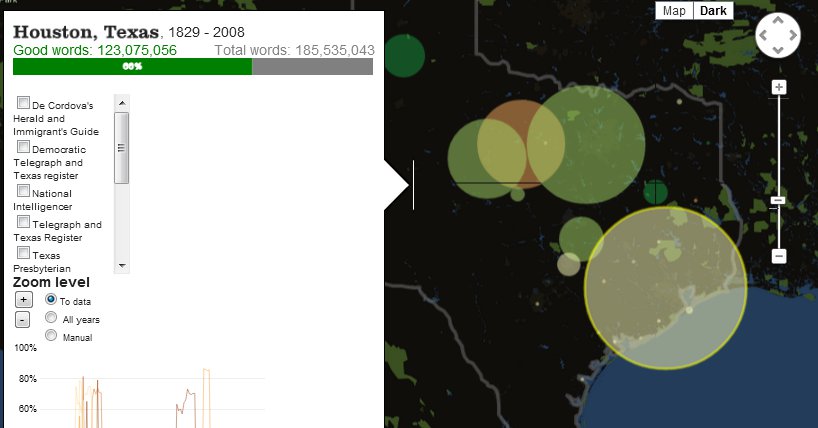Center's "Mapping Texts" Project Presented in Digital Scholarship Journal

Detail from a visualization produced for the Mapping Texts project
Mapping Texts, the Center's recent collaboration with the University of North Texas, is one of several Stanford projects showcased in the current Journal of Digital Humanities, published today. In the article "Building New Windows into Digitized Newspapers," co-authors Jon Christensen and Andrew Torget describe the exciting opportunity and daunting challenge faced by scholars dealing with historical documents like newspapers that have been optically converted into digital texts.
In building Mapping Texts we wanted to create more transparent windows into the extraordinary wealth of information available in online archives of digitized historical newspapers. We wanted, for example, to be able to see how much information was available for any particular time and place, and then measure just how much of that information was still recognizable – and thus useable – after the digitization process. We also wanted to be able to see the major language patterns coming from these datasets, so that we could use “distant” readings of such massive collections as a way to determine which individual newspapers would likely yield the most useful information from “close” readings. We wanted, in other words, more finely grained methods for indexing both the quantity and quality of information in these archives as they spread out across both time and space.
The authors go on to describe the process that led to two interactive visualizations of the University of North Texas' online archive of 232,500 pages: one that allows scholars to assess the optical conversion quality of the collection – where and when are the most reliably readable documents?; the other presenting the results of several natural language processing tools that were used to machine-read the collection.
The journal includes a review of Mapping Texts by the American Studies scholar Robert Nelson, as well as contributions by the Stanford scholars and technologists Matthew Booker on mapping the history of San Francisco Bay, and Elijah Meeks and Karl Grossner on their interactive digital model of the Roman world.



